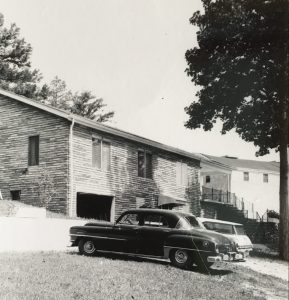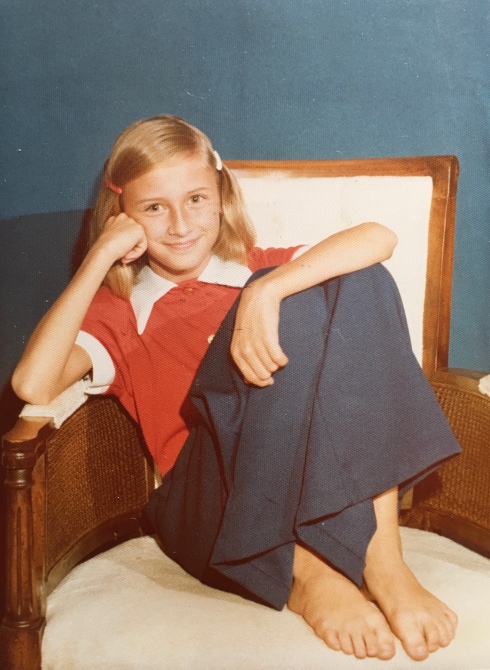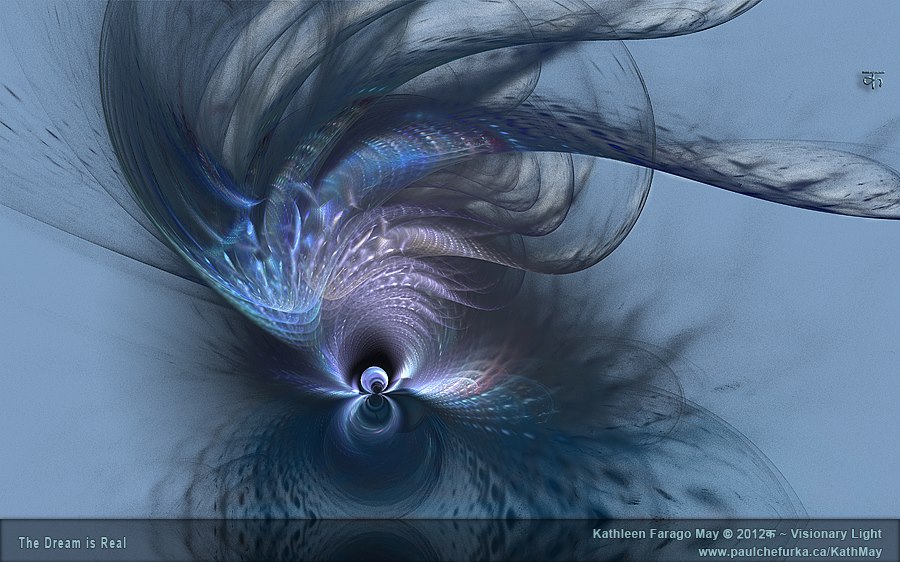THIS ARTICLE IS FEATURED ON THE NO DEPRESSION WEB SITE
It’s January 24, 2011, and I’m driving alone somewhere in Indiana, listening to an Eels CD a friend burned for me. Suddenly a song comes on that demands my full attention and compels me to do something I reserve for life’s most powerful moments: talk out loud to myself. “What IS this? This isn’t the Eels, is it?”
 The song’s wise, raspy vocals, world-weary guitar, folksy wistfulness and raw passion stirred deep emotions as I grabbed the CD cover to take a look at the credits. Sure enough, it wasn’t the Eels any more, but the first of six songs tacked onto the end of the CD by none other than Mike Coykendall. But who was he?
The song’s wise, raspy vocals, world-weary guitar, folksy wistfulness and raw passion stirred deep emotions as I grabbed the CD cover to take a look at the credits. Sure enough, it wasn’t the Eels any more, but the first of six songs tacked onto the end of the CD by none other than Mike Coykendall. But who was he?
By that night I had learned that Mike’s last name is pronounced “Kirkendall,” that he is a studio engineer who has produced and toured with M. Ward, that he used to have a band called the Old Joe Clarks and has created two solo records, which I immediately downloaded (my first Itunes purchases, incidentally, lest you think I do this sort of thing all the time).
 Before long, Mike and I were Facebook friends. We corresponded off and on about music for several months, he shared with me the demo of his upcoming release, and just last month, I got to meet him and his wife and musical partner, Jill Coykendall, in Portland, Ore., where they live. First I got to see them perform with their band, The Golden Shag, and then we met for coffee at the Albina Press one morning.
Before long, Mike and I were Facebook friends. We corresponded off and on about music for several months, he shared with me the demo of his upcoming release, and just last month, I got to meet him and his wife and musical partner, Jill Coykendall, in Portland, Ore., where they live. First I got to see them perform with their band, The Golden Shag, and then we met for coffee at the Albina Press one morning.
Frances: You’ve been making music since you were quite young, heading up Wichita-based rock band Klyde Konnor from 1984 to 1991. What are your earliest musical memories and how was your family instrumental in your creative development?
Mike: My parents were encouraging with regards to music, especially my mother. The earliest music I recall was my mother singing to me. She sang the songs that had been sung to her as a child and added to that some songs she’d learned from going to movies as a child in the 1940s. Beyond that, there was the music I heard when my mom took me to the Baptist church every Sunday; I wasn’t really paying attention, but it was there. My dad liked music too, but thought it was a bad road to go down professionally: no way to make a living. He kept the radio on in the car and listened strictly to country music. My older sister Kathy would sometimes take command of the radio when my mother was driving so I remember hearing “Uncle Albert / Admiral Halsey” by McCartney. That one got my attention because I had an Uncle Albert and I thought it was about him.
Frances: How old were you when you first performed in front of people?
 Mike: Performing in front of people was something that I did before I can even really remember it. Probably because of my mother singing to me, I could sing complete songs at around age two – before I could really speak. Anyway, I was that freakish baby that they would stand up on the counter at the grocery store, or bank, or restaurant and ask him to sing. Then I would. Loudly. Those were my first performances. Evidently I didn’t like doing it because at age 3 or 4 my mother told me in private that if I didn’t want to sing at those places all I had to do was say no. So, I started saying no and never did that again.
Mike: Performing in front of people was something that I did before I can even really remember it. Probably because of my mother singing to me, I could sing complete songs at around age two – before I could really speak. Anyway, I was that freakish baby that they would stand up on the counter at the grocery store, or bank, or restaurant and ask him to sing. Then I would. Loudly. Those were my first performances. Evidently I didn’t like doing it because at age 3 or 4 my mother told me in private that if I didn’t want to sing at those places all I had to do was say no. So, I started saying no and never did that again.
Frances: When did you first begin to write songs?
Mike: I remember that I made up a song when I was about 5 or 6. It was a nice melody. Kind of schmaltzy and in waltz time. After that, I remember goofing around on this old upright piano that we had in our house. Just improvising. Often on only the black keys. No big deal, but I knew I could make stuff up and feel it. Then at 14 or 15 I consciously started trying to write guitar songs as I had my first “rock” band around that time. Those songs were pretty bad as I was only imitating my heroes. Poorly.
Frances: How did you first get into recording and what was the draw?
Mike: My interest in recording started in my late teens. I guess it was because by that time I realized that the recording studio had made possible much of the more experimental pop/rock music that seemed to be my favorite stuff. You could double a vocal, put backwards sounds on… things that are impossible to do live. So, I wanted to learn how to do that.

Frances: For decades, your wife Jill has been a major musical collaborator, supporter, player in your bands. What is the musical aspect of your relationship like?
Mike: We both work very hard in our own ways, often on our own. Working together is great, but we don’t do it as much as you might think. We’re both the same in that we need to practice on our own a lot; we give each other tons of space. We push and pull, inspire and encourage and respect each other musically.
Frances: The two of you moved from Kansas, to California, to Oregon. How do you compare those locations and how they inspired you musically? What is it about Portland that creates the right space for your home and musical work now?
Mike: I guess Kansas was great in that there were few distractions. Also, you were kind of out there on your own and there wasn’t that much music happening locally. So it was easy to get a gig and to start trying stuff out. San Francisco was great for the opposite reason. It was the anti-Kansas. It toughened me up, made me work even harder and focus a bit more. Plus it was really good for exposing me to all types of music; that’s where I really got into non-rock musics. (Great record stores down there.) I didn’t listen to rock at all for about five years in the ’90s. San Francisco made me sick of rock but offered me this wealth of options.
 Portland was seen as a city that offered enough culture but also a laid back, friendlier lifestyle. We moved here in ’99 and at the time I really thought that I was going back to the sticks a little. It turned out to be a hot-spot for musician dreamers and wannabes – just like me. Also, it provided us a little more physical space, which allowed me to get into doing recordings for other artists, usually in my home.
Portland was seen as a city that offered enough culture but also a laid back, friendlier lifestyle. We moved here in ’99 and at the time I really thought that I was going back to the sticks a little. It turned out to be a hot-spot for musician dreamers and wannabes – just like me. Also, it provided us a little more physical space, which allowed me to get into doing recordings for other artists, usually in my home.
Frances: You’ve collaborated with an international community of musicians, among them the likes of M. Ward, Gillian Welch, Bright Eyes, Jim James, and Victoria Williams. In terms of creative satisfaction, how do you compare playing and working with other musicians on their creations as opposed to creating your own songs and doing musical things on your own?
Mike: Well… M. Ward, I’ve collaborated with a bunch. We just get each other musically. It clicks. He’s great to work with. All four of those other artists you mention are people that I met through him once he started having success. I haven’t recorded Gillian. I just played a few musical performances with her and David Rawlings as part of the M. Ward thing.
As for comparing my own projects to being someone who helps others with their projects… well, I like both. Helping others pays better (so far). It’s great to be a part of someone else’s group so I don’t have to worry about promoting. I just get into the song and play it as well and inspired as I can as if it were my own. But it’s not – so I don’t take it as personally.

Frances: The band you currently head up is known as the Golden Shag. How does this group of musicians differ from and/or take something from your previous ensemble incarnations such as the Old Joe Clarks and even Klyde Konnor?
Mike: It’s the same and different. The Golden Shag probably falls somewhere in between Old Joe Clarks and Klyde Konnor. Old Joe Clarks was very disciplined and serious. Klyde Konnor was much more haphazard. The Shag is a little of both those things. Also, Klyde Konnor was about being in your 20s. Old Joe Clarks was the 30s. The Shag is the 40s. Each decade makes getting a group together and finding the time to rehearse much more difficult. Lives become more complicated. We’re doing pretty good, considering. It’s a great group of friends.
 Frances: The first songs I heard of yours have remained two of my favorites: “Outward & Beyond” and “Wasted Star.” When we chatted about this, you assumed the versions I was hearing were from the Old Joe Clarks album November, only released in Europe. We later figured out they are from a short EP that was never sold commercially. Can you talk a little bit about the writing of these two songs and what they mean to you?
Frances: The first songs I heard of yours have remained two of my favorites: “Outward & Beyond” and “Wasted Star.” When we chatted about this, you assumed the versions I was hearing were from the Old Joe Clarks album November, only released in Europe. We later figured out they are from a short EP that was never sold commercially. Can you talk a little bit about the writing of these two songs and what they mean to you?
Mike: That EP you heard them on first was taken from a series of guitar/vocal recordings that I made for my dad back in 2005 or 2006. M. Ward heard them and wanted me to offer a few of them on an EP as a free giveaway with purchase from the M. Ward table. I guess kind of a way to get my stuff out there. I was never sure if it worked or not but now I know it did! Most of the songs I recorded were old Country covers as that is what my father liked (he never really “got” my originals).
“Outward and Beyond” was one of the last songs I wrote while living in San Francisco. I think I tied up a few loose ends on it shortly after moving to Portland. Anyway, I almost always carry a notebook with me so I can scribble words. I remember writing those lyrics while sitting in Golden Gate Park. I was trying to make sure that the words reflected accepting, moving, and being positive about all that comes your way as best you can. Then I put it to music later using a slowed down rhumba feel that seemed to work with the meditative quality of the whole thing.
“Wasted Star” was written shortly after moving to Portland. I remember being in the kitchen with my boom box cassette recorder. Just streaming / improvising things on guitar. Seeing what happens. When I do this, I’ll often sing words mixed with things that “sound” like words. Then later on, when I have the patience, I’ll go back and listen and then try to decipher the mixture of words and mumbles. That’s how this song came along. There it was, it grabbed me and it sounded like something that could be finished off with very little work. One of those that kind of just happened. I know I tweaked the improvised lyric a little later so some of it was conscious. I was just happy that it wasn’t another ballad! The Old Joe Clarks always needed these precious rockers (I tend to be a ballad king).
 Frances: Your self-produced albums as Mike Coykendall, Hello, Hello, Hello in 2005 and The Unbearable Being of Likeness in 2009, demonstrate your ability to create combinations of folk rock and psychedelia and to engineer unique ambient sounds in the studio. Probably my favorite songs on those are “Top of the World,” “If I Only Knew” (which I just wish was longer!), “It’s Raining Inside” and “Bye-Bye-Baby-O.” How did you approach these albums/songs musically, philosophically, creatively?
Frances: Your self-produced albums as Mike Coykendall, Hello, Hello, Hello in 2005 and The Unbearable Being of Likeness in 2009, demonstrate your ability to create combinations of folk rock and psychedelia and to engineer unique ambient sounds in the studio. Probably my favorite songs on those are “Top of the World,” “If I Only Knew” (which I just wish was longer!), “It’s Raining Inside” and “Bye-Bye-Baby-O.” How did you approach these albums/songs musically, philosophically, creatively?
Mike: Well, those two albums that you mention were for the most part recorded during the same time period, 2003-2005. Right after the last Old Joe Clarks record. I found myself without a live band and spending my time recording other artists in my home studio. I’d always wanted to make some adventurous studio records where I experimented with sounds. It seemed to be the right time to do it. So, whenever I had a day or two free, I’d just mess around in the studio. Sometimes I had a song already written, sometimes I would just lay stuff down and build on it until it became something or didn’t.
 Each of the songs you mention were not written before the recording process began. “Top of the World” was just started with the acoustic part, then I layered on the other stuff. At some point I added the vocal, which was just a reaction to the sound and feeling of the music. “If I Only Knew” was started with a high-strung electric guitar part played through some pedals. It’s an “old time-ish / bluegrass” type lick if you play it on a standard tuning acoustic, but when played the way I did it sounded different and weird. The song is the length it is because that is as long as I played that first improvised basic track (I record on tape so no looping in the digital realm). Anyway, the lyrics were later taken out of one of my notebooks because I wanted to sing on it. “It’s Raining Inside” began as just the guitar riff. I wanted to do a guitar riff song that day as I tend to be a chord strummer. My attempt at a “Lucifer Sam” or “Day Tripper” kind of thing. I then spent a little time on the lyric but not too much. “Bye-Bye-Baby-O” was based off that incessant two-chord acoustic guitar that I put down at one point and then wrote/recorded the rest later. I mixed it but then forgot about it for a while. The lyric is full of dark humor. Musically it’s kind of a mess but it works with the lyric and overall feeling.
Each of the songs you mention were not written before the recording process began. “Top of the World” was just started with the acoustic part, then I layered on the other stuff. At some point I added the vocal, which was just a reaction to the sound and feeling of the music. “If I Only Knew” was started with a high-strung electric guitar part played through some pedals. It’s an “old time-ish / bluegrass” type lick if you play it on a standard tuning acoustic, but when played the way I did it sounded different and weird. The song is the length it is because that is as long as I played that first improvised basic track (I record on tape so no looping in the digital realm). Anyway, the lyrics were later taken out of one of my notebooks because I wanted to sing on it. “It’s Raining Inside” began as just the guitar riff. I wanted to do a guitar riff song that day as I tend to be a chord strummer. My attempt at a “Lucifer Sam” or “Day Tripper” kind of thing. I then spent a little time on the lyric but not too much. “Bye-Bye-Baby-O” was based off that incessant two-chord acoustic guitar that I put down at one point and then wrote/recorded the rest later. I mixed it but then forgot about it for a while. The lyric is full of dark humor. Musically it’s kind of a mess but it works with the lyric and overall feeling.
Frances: You’ve produced records for Blitzen Trapper, Tin Hat Trio, Pancake Breakfast, Richmond Fontaine and She & Him in the past five years as well. How do you strike a balance between the work you do for others to make a living and dedication to your own creative projects?
 Mike: I usually put the work that pays the bills first on the list. Then I see where there are gaps in my schedule – or they just happen. I do my stuff then. I consider myself lucky to be able to work for and with other artists. I try to bring my best to every session. So, I’ve tended to place my own creative projects second. I still spend a lot of time doing my own stuff, but more as a release and for fun. I obsess but I don’t stress. It’s been a new way of working and I’ve enjoyed it quite a bit. It’s been fun to get freaky again after the ’90s, when I really worked hard and focused on craft with Old Joe Clarks.
Mike: I usually put the work that pays the bills first on the list. Then I see where there are gaps in my schedule – or they just happen. I do my stuff then. I consider myself lucky to be able to work for and with other artists. I try to bring my best to every session. So, I’ve tended to place my own creative projects second. I still spend a lot of time doing my own stuff, but more as a release and for fun. I obsess but I don’t stress. It’s been a new way of working and I’ve enjoyed it quite a bit. It’s been fun to get freaky again after the ’90s, when I really worked hard and focused on craft with Old Joe Clarks.
Frances: How do you feel musicians have had to adapt to the new economic realities?
Mike: Being a musician in the current economy… it’s tough. Tougher than ever. Records aren’t selling that well and you need to tour to get the word out. Touring costs are expensive and there is tons of competition in major markets. It’s an insane way to try and make a living, but some have made it work. Most musicians I know work day jobs (just as I did from ’84 to ’04). Hopefully they find jobs that allow them to tour if they get a chance. Those jobs are hard to come by. Also, they have to keep their rent as low as possible, like maybe live in someone’s converted garage, for example.

Frances: Upon listening to your new double CD release, I found similarities in various songs to influences as diverse as Robert Plant, the Hollies, Gillian Welch, Tony Rice, Howe Gelb, Rainer Ptacek, Wilco and Jeff Tweedy, Richard Thompson and James McMurtry. It puts me in mind of the tone of Dylan’s Basement Tapes and The Band’s Music from Big Pink. But you actually based the initial blueprint for the record on an album by one of your primary influences, the Beatles, right?
 Mike: Yes. For a year or so, while making this record, I played a secret game with myself by trying to use the Beatles White Album as my template and plugging my songs into their running order by some similarity or loose association. It was a fun project to work on, but I eventually had to give up on this concept as it was driving me crazy trying to get my record to flow and feel right (as its own thing) while still conforming conceptually to the White Album.
Mike: Yes. For a year or so, while making this record, I played a secret game with myself by trying to use the Beatles White Album as my template and plugging my songs into their running order by some similarity or loose association. It was a fun project to work on, but I eventually had to give up on this concept as it was driving me crazy trying to get my record to flow and feel right (as its own thing) while still conforming conceptually to the White Album.
Frances: A few of my favorite songs from the new one are “Mr. Fly,” “As Lost as You Are,” and “Medic.” Can you talk about the writing process or concepts behind these songs?
Mike: “Mr. Fly”: I clearly remember writing that lyric as I was just jotting down what was going on around me at the time. There were more verses originally. Later on I just distilled it down a little to make a song. One of my faves. “As Lost As You Are” was something I had written a few years earlier. The lyric is just a reflection of how much static there is out there. The music just happened. It’s a pretty simple three-chord rocker. Fun to play live. “Medic” was just a studio experiment that got out of hand but still works if you like that noisy hypnotic kind of thing. I do.
Frances: The new two-CD set, not yet titled, reflects your continued growth as a writer and producer, and represents a mature homage to influences ranging from the Beatles to Bob Dylan, the Byrds to Brian Eno, Tom Petty to Pink Floyd, Johnny Cash to JJ Cale. How are you planning to market the work and how can your community of fans become involved?
 Mike: I had a blast making the new record over the last four years. I’m very happy with it and do want to give it a chance to be heard. So… I’m going to try find a label that is into releasing it. I’m just starting to get my “sales pitch” together for it. I just want to perform as much as I can and tour as much as is possible. That will likely mean that I have to do it as a solo act much of the time just to make it somewhat sustainable. I’ll take the band as much as I can but that requires much more coordination and expense. I would love to just go out with a couple guitars and do a set somewhere every night. House concerts interest me; there has been a growing scene for that. So, I’d love to do a bunch of those plus I’d obviously take gigs at established venues. It would be nice to get the chance to open for a larger act on one of their tours. Perhaps I could supplement their band or do merchandise for them. I’d also love to be able to do some field recording for other artists while out on tour. Basically, my marketing plan is to just go out there and do the things I do well as much as I can.
Mike: I had a blast making the new record over the last four years. I’m very happy with it and do want to give it a chance to be heard. So… I’m going to try find a label that is into releasing it. I’m just starting to get my “sales pitch” together for it. I just want to perform as much as I can and tour as much as is possible. That will likely mean that I have to do it as a solo act much of the time just to make it somewhat sustainable. I’ll take the band as much as I can but that requires much more coordination and expense. I would love to just go out with a couple guitars and do a set somewhere every night. House concerts interest me; there has been a growing scene for that. So, I’d love to do a bunch of those plus I’d obviously take gigs at established venues. It would be nice to get the chance to open for a larger act on one of their tours. Perhaps I could supplement their band or do merchandise for them. I’d also love to be able to do some field recording for other artists while out on tour. Basically, my marketing plan is to just go out there and do the things I do well as much as I can.
Learn more about Mike.
Tags: Mike Coykendall, Music, Oregon, Portland
 I can distinctly recall listening to The Who, The Stones, Elton John, James Taylor, Carole King, Kansas, Fleetwood Mac, and so many others while swinging on our front porch, looking out across the grounds of Boones Creek Baptist Camp. I did this sometimes during rainstorms, when I would kick the swing higher and higher to the beat of Abba, Boston, Queen or Thin Lizzy and watch from my rock-n-roll chariot as the wind shook the trees, who became, in my imagination, large green bears dancing in time to the songs.
I can distinctly recall listening to The Who, The Stones, Elton John, James Taylor, Carole King, Kansas, Fleetwood Mac, and so many others while swinging on our front porch, looking out across the grounds of Boones Creek Baptist Camp. I did this sometimes during rainstorms, when I would kick the swing higher and higher to the beat of Abba, Boston, Queen or Thin Lizzy and watch from my rock-n-roll chariot as the wind shook the trees, who became, in my imagination, large green bears dancing in time to the songs.  What intrigued me was not that the knowledge of this song in itself was so earthshaking, but that I could so clearly remember the tune and faux words of a song I heard only once when I was a preteen just launching my long-term relationship with music of every kind. Over the years, whenever it entered my consciousness, I always thought, “I wonder if I’ll ever find that song.” Now that I have, it’s like emerging from a labyrinth that was actually a fun and mysterious part of my life. I’d love to tell the guys from the Atlanta Rhythm Section what a lasting impression their song made on a young girl in East Kentucky for whom music has to this day remained a powerful and inspiring creative force.
What intrigued me was not that the knowledge of this song in itself was so earthshaking, but that I could so clearly remember the tune and faux words of a song I heard only once when I was a preteen just launching my long-term relationship with music of every kind. Over the years, whenever it entered my consciousness, I always thought, “I wonder if I’ll ever find that song.” Now that I have, it’s like emerging from a labyrinth that was actually a fun and mysterious part of my life. I’d love to tell the guys from the Atlanta Rhythm Section what a lasting impression their song made on a young girl in East Kentucky for whom music has to this day remained a powerful and inspiring creative force.























































































Recent Comments